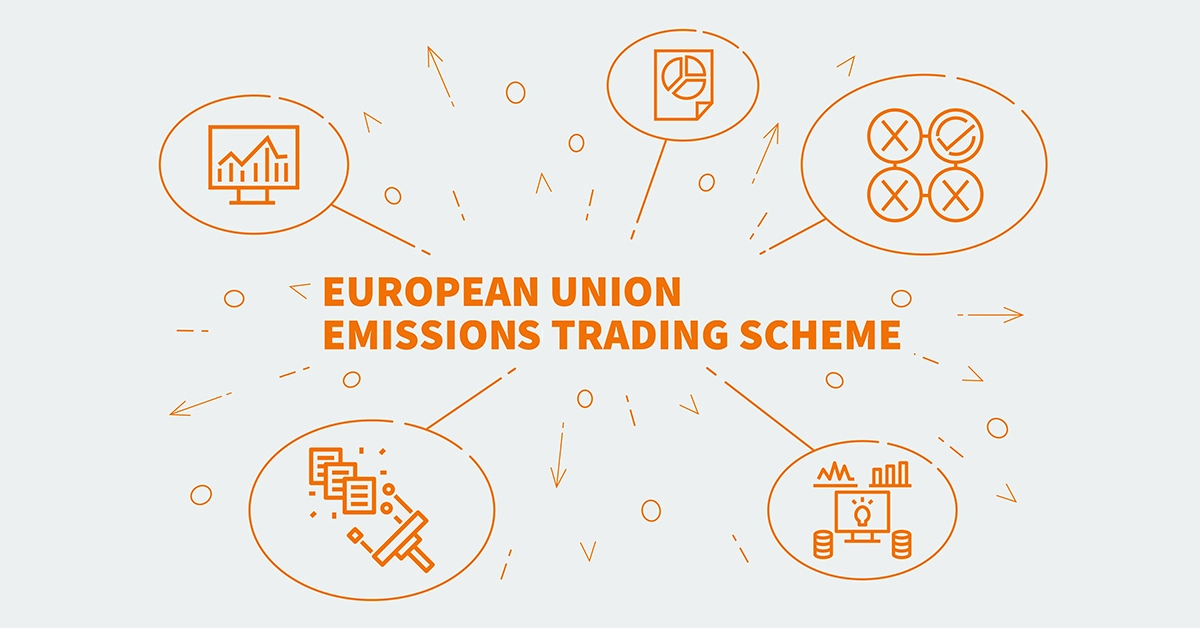
The global shipping industry is undergoing significant transformation as environmental regulations tighten to combat climate change. One of the most important developments in this regard is the introduction of the European Union Emissions Trading System (EU ETS) for shipping. As the world’s focus shifts toward sustainability, shipping companies must adopt new strategies to comply with these regulations. SynergyMarineGroup, a key player in the maritime sector, is at the forefront of ensuring compliance with the EU ETS and enhancing the environmental performance of shipping operations.
What is the EU ETS and Why Does it Matter for Shipping?
The European Union Emissions Trading System (EU ETS) is a carbon market established by the European Union to reduce greenhouse gas emissions. It operates on a “cap-and-trade” system where a cap is set on the total amount of emissions, and companies are allocated or can purchase emission allowances. If a company exceeds its allocated limit, it must buy additional allowances from other companies. Conversely, companies that manage to reduce their emissions below their cap can sell their surplus allowances.
For the shipping industry, which has historically been one of the largest sources of carbon emissions globally, the EU ETS has introduced a major shift. Shipping companies that operate within the European Economic Area (EEA) are now subject to this system, meaning that they must monitor and report their emissions and purchase allowances for any excess CO2 emissions they generate.
This move is a vital step in addressing the shipping sector’s environmental footprint, which accounts for around 2-3% of global greenhouse gas emissions. By including shipping in the EU ETS, the European Union aims to reduce emissions by approximately 40% by 2030, compared to 2005 levels.
SynergyMarineGroup’s Role in Shipping EU ETS Compliance
As the EU ETS expands into shipping, SynergyMarineGroup has become a critical partner for many maritime businesses seeking to navigate these complex regulations. With years of experience and a deep understanding of both maritime operations and environmental policies, SynergyMarineGroup provides tailored solutions to help companies comply with EU ETS while minimizing their environmental impact.
1. Emission Monitoring and Reporting: One of the first steps toward compliance with the EU ETS is the accurate monitoring and reporting of CO2 emissions. SynergyMarineGroup offers sophisticated technologies and expert consulting services to help shipping companies track and report emissions from their vessels. By utilizing advanced monitoring tools, companies can ensure that they meet the stringent reporting requirements set by the EU and avoid penalties.
2. Carbon Management Strategies: SynergyMarineGroup goes beyond simply helping companies monitor emissions; they also help devise strategies to reduce carbon footprints. This includes optimizing shipping routes, adopting fuel-efficient technologies, and exploring alternative fuels such as LNG or biofuels. The company’s expertise ensures that shipping companies can reduce their emissions, lower operational costs, and even generate potential revenue by selling surplus carbon allowances.
3. Compliance Assurance and Risk Mitigation: The regulatory landscape surrounding the EU ETS can be complex and ever-changing, which poses a significant challenge for shipping companies. SynergyMarineGroup assists in navigating these regulatory waters by providing ongoing support to ensure that clients remain compliant as laws evolve. By staying ahead of regulatory updates and offering proactive compliance strategies, SynergyMarineGroup helps companies avoid fines and reputational damage.
The Future of Shipping EU ETS and SynergyMarineGroup’s Commitment
As the EU ETS continues to develop, shipping companies will face growing pressure to improve their environmental performance. SynergyMarineGroup is committed to remaining at the cutting edge of these changes, continuously innovating and adapting to ensure that their clients stay ahead of the curve. By embracing sustainability, SynergyMarineGroup is not only helping clients meet regulatory requirements but also positioning them as leaders in the transition to a greener, more sustainable shipping industry.
The EU ETS presents both a challenge and an opportunity for the shipping sector. With the right tools and expertise, companies can turn compliance into a competitive advantage. SynergyMarineGroup’s unwavering commitment to sustainability and compliance will ensure that its clients remain well-positioned to succeed in a rapidly evolving regulatory environment.
Conclusion
The introduction of the EU ETS for shipping marks a critical milestone in the global effort to combat climate change. SynergyMarineGroup is helping maritime businesses navigate this new regulatory landscape, ensuring that they comply with emissions requirements while also contributing to the reduction of the industry’s carbon footprint. As the shipping industry continues to evolve, SynergyMarineGroup’s expertise and dedication to sustainability will remain a driving force in shaping a more sustainable and compliant future for maritime operations.
By working with SynergyMarineGroup, shipping companies can confidently navigate the complexities of shipping EU ETS and embrace a future that prioritizes environmental responsibility.